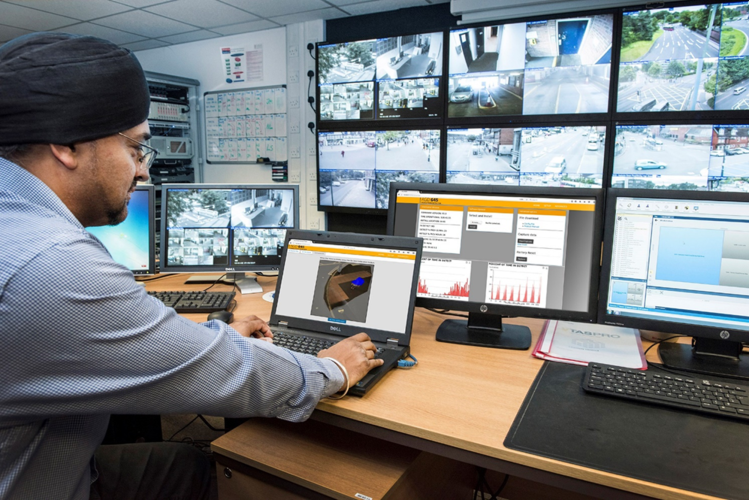So, what is a Smart City? A Smart City is an urban environment where infrastructure and services are interlinked using technology to improve the quality of life by enhancing their operation. For stakeholders, this interconnectivity provides a pathway to improve their services, whilst also accruing cost benefits by using shared infrastructure and data streams.

The term ‘Smart Cities’ should be seen in a holistic sense, regarding the overall management and operation of a city by a plethora of stakeholders, both governmental and private entities. However, because of the often-disjointed nature of government and commercial organisations, most people tend to look at it from an industry specific perspective. Across the broad range of utilities and services operated in a typical city, there have been wide-ranging moves to adopt technology to manage services. This gradual digitisation has tended to be piecemeal in approach, and has resulted in fragmented implementations even within individual organisations. To get the most benefit out of these existing investments, it would be advantageous to use an overlying framework which allows for Open Data exchange to bridge across these existing boundaries.
In addition to the benefits that Open Data can bring operationally, the common use of infrastructure can provide immediate cost savings to beleaguered city authorities. It has been common over the years for different departments to deploy or use separate infrastructure, for example duplicating communications systems for traffic systems, street lighting or network connections to civic buildings. However, to make the uptake of common features attractive to different entities, the infrastructure needs to be sufficiently flexible to cope with changing requirements and scalable to allow the system to have the capability to add large numbers of additional devices over the years.
Smart City implementations should also not be technology specific, but look to the capabilities and requirements that both currently exist and which are likely to be required over the coming years. Although the more traditional large scale technology architectures use a top-down topography (typically where the local authority purchases an overarching system from an equipment vendor), systems will need to consider the increasing requirements to cater for individual bottom-up installations (usually small scale, single parameter sensors and apps) and how these can be incorporated to gain the maximum overall benefit. This flexibility will allow Small and Medium-sized Enterprises along with individuals to contribute to, and benefit from, Smart City infrastructure in ways which may not have been envisaged when the system was first set-up. Most people will imagine that a Smart City deployment will incorporate sub-systems such as traffic management, street lighting and maybe items like drainage, but thought should also be given to disparate applications like social care, law enforcement and features to deal with civil emergencies.
The making of a Smart City is not just about technology though. To ensure the success of any infrastructure investment, it is critical that client groups are engaged from the initial planning and design stages through to implementation, to ensure adequate use of the facilities to justify the time, money and effort expelled and to ensure their ongoing relevance. Consideration of changing population demographics also needs to be incorporated within the planning process, to allow for aging populations and the possibility that priorities will change over the course of the next decade. This includes assumptions such as ‘Digital by Default’, which need to account for usability requirements for those with a whole range of abilities, including those with physical and cognitive impairments.

Within the transportation context, technology advances continue at such a pace that it can be difficult to assess the best path forward, or to differentiate between practical applications and hyperbole. Autonomous vehicles are an area that have an impact on the development of Intelligent Transport Systems (ITS) infrastructure, although it is apparent, at least to start with, that the requirements for communications facilities between vehicles and to roadside equipment will be required as an enabler. However, any new facilities will need to ensure that their operation is accurate, timely and reliable.
Many cities have had an Urban Traffic Control (UTC) system for many years. These usually incorporate a range of features including traffic systems (which are used to monitor traffic flow across the city and to synchronise the operation of traffic signals) and CCTV (which allow operators in the local control room to monitor traffic flow or incidents visually). It is also common for additional facilities such as Variable Message Signs (VMS), parking guidance and real-time passenger information systems for public transport services, to be incorporated with these.
The extensive infrastructure deployments across our cities and the financial investments which have been made over the years to pay for them, result in transportation systems offering a unique opportunity for the development of Smart Cities.
It is probable that traffic installations, such as traffic signal controllers, will soon become data nodes for a variety of emerging highway-based technologies over the coming years, due to their connected status and distributed nature across the road network. An early example of this is the ‘Array of Things’ implementation in Chicago, which incorporates a range of environmental and air quality sensors amongst other features. These units are in a pole mounted housing, typically located at signalised intersections. Because these units are relatively inexpensive, they can be placed regularly across the city, providing a level of insight which is not achievable with a handful of traditional monitoring stations. Additionally, this type of implementation offers the flexibility to supplement sensor capabilities, to include a broad range of reported parameters. As well as providing data to the public, these can be used to provide supplemental information to authorities to infill areas which have not been previously monitored. Examples of these additional monitoring capabilities include ambient light and noise, vibration, water level and pedestrian movements. To city authorities and utilities, this data could provide supporting information about a range of issues such as power outages, civil disturbances and flooding.
At this point, due to the increasing pressures seen by cities caused by population expansion, most authorities need to prioritise on issues to deal with traffic congestion. However, the days where it was possible to simply build additional highways to increase capacity have largely gone, therefore more innovative and environmentally balanced solutions are required. Because of this, it is often necessary to re-allocate segments of existing capacity to encourage modal shifts away from private vehicles and to make the remaining highway network more efficient in order to eke out the maximum use of this limited resource.
Although most traffic systems make use of extensive, sophisticated vehicle detection equipment to optimise the operation of traffic signals across a city, the way in which pedestrians and cyclists interact with these systems has generally been fairly rudimentary. However, as pressures grow to make better use of highway capacity, additional capabilities to take account of the number of these users in the amount of time dynamically allocated to them by traffic signals will inevitably make use of innovative technologies to detect them. This type of feature is indicative of the way in which traditional capabilities may be enhanced by the use of Internet of Things (IoT) technologies, which can allow more flexibility in the deployment of sensors and not restrict the use of the data which they produce to a single system. The data could therefore be used by multiple stakeholders, including commercial organisations, for example to give special offers during busy periods to tempt pedestrians to use public transport or Mobility as a Service (MaaS) operations.
The flexibility gained from using an Open Data approach to systems deployment then allows users to ‘consume’ information in a way that is appropriate to them. The dissemination of data should therefore not be constrained to a particular media or application, but allow multiple pathways for the public to access and use it. This user-led approach allows independent developers access to the data and does not restrict innovation. Over recent years, we have seen huge growth in the number of apps used to provide information to the public, so it is inevitable that the breadth of data availability will drive increasingly diverse offerings for people to use. In addition to items such as public transport service information, pollution monitoring and civil emergency information, the inventiveness of developers will result in a plethora of capabilities, including assistive technologies to make using ubiquitous infrastructure like pedestrian crossings, easier for those with mobility or visual impairments. This type of approach can increase functionality, while also reducing capital expenditure and running costs, by removing the need for additional equipment (such as electronic Real-Time Passenger Information (RTPI) screens at bus stops), and allow users to access this information via their smart phone instead.

So how can disparate data sources be brought together to influence and inform the ITS systems which operate our transport networks and offer a pathway for additional stakeholders to gain value from their use? The Urban Traffic Management and Control (UTMC) initiative, launched in the UK by the Department for Transport, sought to use modular systems based on open standards to allow highway authorities to achieve their transport objectives without being constrained by ‘single source’ solutions. Commercial UTMC products benefit from the experience gained from continual technological evolution implementing intelligent smart mobility applications by leveraging the advantages of open standards, allowing equipment and sub-systems from different suppliers to work effectively together. This type of platform allows data to be easily exchanged between different stakeholders, while benefitting the operation of the city at the same time.
To ensure user acceptance of Smart Cities implementations, the technologies used should be flexibly structured to make sure that they empower individuals to go about their daily lives, rather than forming a rigid framework that constrains them. People will readily adopt services that provide them with advantages which they would not otherwise have, so an Open Data topography is a key enabler to achieve this.
150x150.png)